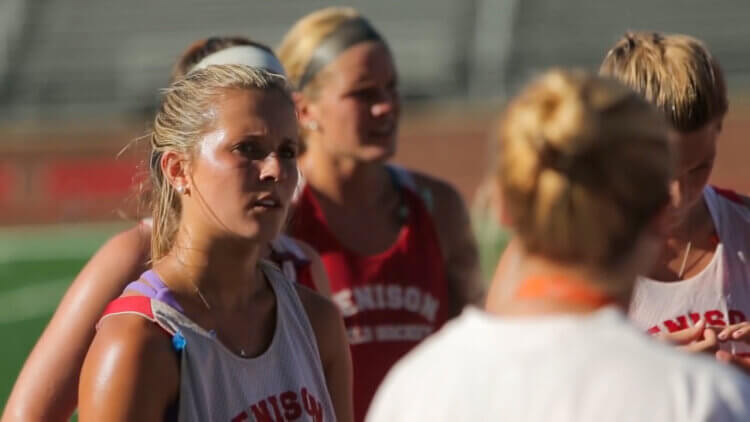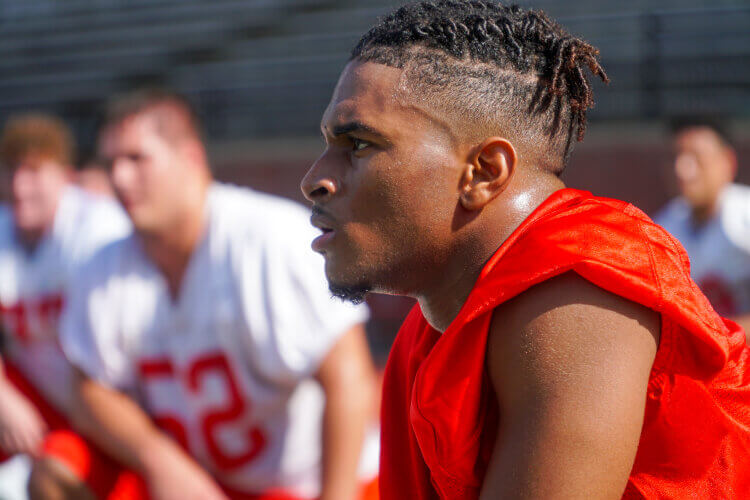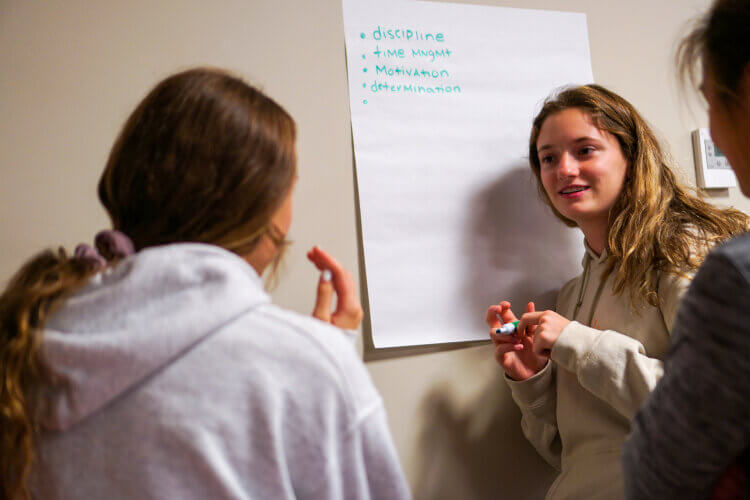(2 Minute Read)
In the past few months, I have worked with student-athletes that are now interacting with their sport in ways that are unfamiliar – having their competitive seasons cut short, working out without their teammates, having remote team meetings, and even worrying about the potential cancelation of their upcoming campaigns. The trying situation in which athletes currently find themselves is ripe for growth. The extent to which they will learn is heavily influenced by coaches and how they help athletes under their direction engage the current sport experience.

Reflection is crucial to the process of generating new knowledge from an experience. In other words, if coaches want athletes with whom they work to learn and develop, it is necessary to be intentional with how they attempt to facilitate athlete-reflection. The term “reflection” is often used to describe a range of practices (Cushion, 2018). In order for an individual to effectively help athletes reflect, the mental processes that are encompassed by the term need to be understood. Schön (1983) detailed three distinct mental processes of reflection: Reflection In-Action is principally about evaluating your thoughts and sensations while an event is occurring – “thinking on your feet”; Reflection On-Action is a deliberate use of logic and reason to gain understanding when there is a stoppage in action but also when there is still an opportunity to impact the action-present, and Retrospective Reflection-On-Action is a deeper process used after an event that can include an attempt to fully reconstruct the experience, think abstractly about potential future actions and even experiment. These types of reflection are actually different mental processes and need to be treated as such (For a full model of athlete reflection see Lott, 2018).

I recently studied the manner in which coaches at the collegiate level attempted to facilitate athlete-reflection and I noticed something very interesting. Coaches in my study primarily used the same strategy regardless of the mental processes available to athletes in different contexts. Coaches proved quite capable of creating initial awareness about something and then taking advantage of a stoppage in play to bring attention to a particular issue with positive or negative reinforcement. This often involved telling or showing the athlete what they did or did not do. There was almost no attempt to get athletes to reflect in-action nor an attempt for a longer-term deep engagement with an issue.

For coaches that are trying to work with athletes remotely or in atypical situations, now is an opportune time to practice facilitating reflection in different manners. It is also beneficial to teach one to reflect on different content. Reflecting solely on technique, mechanics, and strategy neglects a lot of potential learning about effective performance and transferable skills. To help athletes reflect in the three distinct areas mentioned above, consider the following suggestions:
Reflection In-Action: Prime athletes so that they are prepared in advance how to respond to an image, a feeling, a word, or a position. Teach them to run a quick diagnostics for awareness. Implore them to create mental models with potential responses based on their internal feedback.
Reflection On-Action: When you are directly facilitating, ask questions (to learn, not to judge). Also, teach them what type of questions to ask to themselves and each other. This is not the time for them to ruminate. Coach them to ask, answer, decide, and move on.
Retrospective Reflection On-Action: Give athletes prompts to which they can respond in a workout log or reflective journal so that their reflection is directed. Logistically, you can have many athletes responding to the same prompts, personalizing the reflection with an individualized observation that you think each athlete needs to address.
References
Cushion, C. (2018). Reflection and reflective practice discourses in coaching: A critical analysis. Sport, Education and Society, 23(1), 82-94.
Lott, G. (2018). Working towards a model of reflection to improve athlete development. Applied Research in Coaching and Athletics Annual. 2018 Special Edition, 1-30.
Schön, D. (1983) The reflective practitioner: How professionals think in action. London: Temple Smith.
